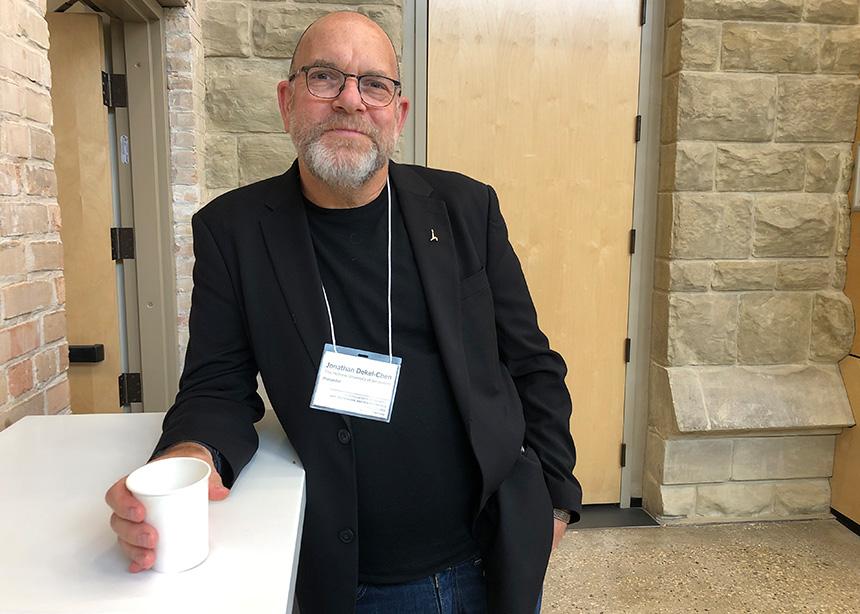
Daniel Dekel-Chen. (Photo courtesy of John Longhurst)
One thing participants in the Memories of Migration: Russlaender 100 Tour have been reminded during the trip is that the experiences facing their ancestors in the Soviet Union were not unique. Other groups also faced hardship and crisis there at the same time.
This was a point underscored by Jonathan Dekel-Chen of The Hebrew University of Jerusalem at “The Russlaender Mennonites: War, Dislocation, And New Beginnings(link is external),” a July 14-15 conference at the University of Winnipeg.
In his presentation, titled “Mirror Images? Russlaender Mennonites and their Jewish Farming Neighbors,” Dekel-Chen described interactions between Jews and Mennonites in Ukraine and Crimea in the late 19th and early 20th centuries.
Like Nataliya Venger, the Ukrainian scholar who discovered Mennonites while researching her country’s past, Dekel-Chen “bumped into” Mennonites while doing studies about Jews in that part of the world.
In his case, it was research into Jewish agricultural settlements in Ukraine(link is external). Through that research, he learned that Russian authorities sent Mennonites to Jewish settlements to serve as teachers and mentors to help them become better farmers.
The Jewish settlements, which experienced difficulty being established, “needed help from someone who knew what they were doing” when it came to agriculture, he said.
“It’s not a huge story,” he said of how Mennonites and Jews interacted back then, but he finds it an interesting one. “To a degree, both groups had similar experiences there,” he said, noting that “Jewish colonies looked like Mennonite colonies,” with both being better off than their Ukrainian neighbours.
As well, both groups divided over differences of belief and opinions and both also received help from abroad—Jews from American and French philanthropic organizations, the Mennonites from Mennonite Central Committee.
As well, both faced decisions about “whether to stay or leave” and both were “targets of violence, the Jews first,” the attacks being “fueled by ethnic and class-based hatred.”
From his research, he could find “no animosity” between Mennonites and Jews at that time, only “mutual respect.”
“They didn’t do anything bad to each other,” he said, although the “the 600-pound gorilla” of Mennonite and Jewish relations during the Holocaust can’t be ignored.
Things would end badly for both communities, he noted, with Mennonites in Ukraine emigrating or being exiled in the 1920s and 1930s while Ukraine’s 200,000 Jews fell victim to the Nazis in the early 1940s.
Dekel-Chen thinks more study could be done about the experiences of Jews and Mennonites in the Soviet Union. There are “tantalizing comparisons” between the two groups, he said.
Sponsored by the Centre for Transnational Mennonite Studies at the University of Winnipeg, the conference was part of Memories of Migration: Russlaender 100 Tour.
Topics included in the conference were Neighbours, Revolution, and Civil War; Exodus and Accommodation; The Soviet Promise; Immigration, Deportation, and Encounters; and An Immigrant Culture. About 200 people attended the conference in person, with about joining 150 online.
John Longhurst is a Winnipeg freelance writer who is blogging about the tour.
